Cooks who love Italian cuisine can be very picky about their tomatoes, as a good tomato is indispensable to Italian cooking.
The best Italian tomato varieties are not always available in US grocery stores however, and many a cook will therefore opt to grow their own tomatoes, whether that be in a pot on the balcony or in a backyard garden.
Discover the 14 best Italian tomato varieties and how to grow them in an urban setting or in a rural Italian kitchen garden.

Jump to: 14 Best Italian Tomato Varieties | How to Grow Italian Tomatoes | Cooking & Preserving Italian Tomatoes
This post may contain affiliate links. As an Amazon Associate, I also earn from qualifying purchases. You can read our disclosure information here–
The Importance of Tomatoes to an Italian Kitchen Garden
The tomato is the quintessential ingredient for Italian cooking, whether it be used in a country tomato sauce, a green dinner salad, or an elegant braciole for the holidays.
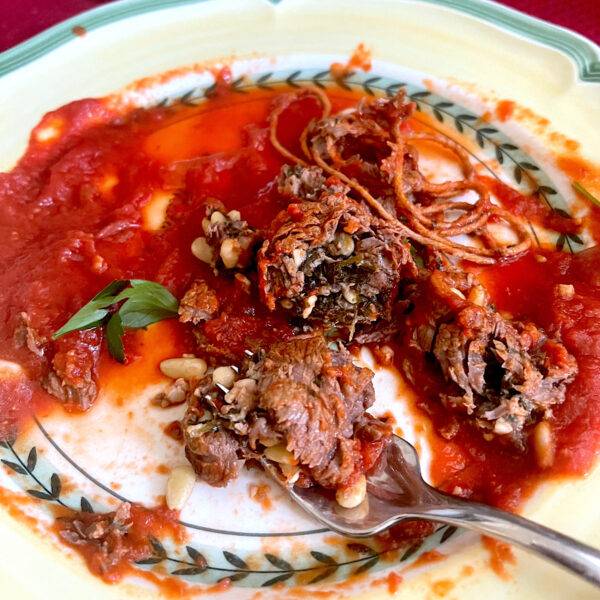
The first Westerners to lay eye upon the domesticated tomato (Solanum lycopersicum) were the Spanish conquistadores, who found Aztecs using it in their cooking when they arrived in Mexico in the 16th century.
By 1544, tomatoes had definitely reached Italy, although at this point these “pomi d’oro”, or “golden apples”, were considered more of a decorative type of eggplant than a food. They were much more acidic than our modern tomatoes, and folks figured they were toxic.
Things changed around the late 1600s, when vegetables in general became more popular. The people of Italy never looked back, and the tomato (now “pomodoro”), which happens to grow wonderfully in the Mediterranean climate, soon became a staple food.
Nowadays, Italy is the biggest tomato producer in Europe. It has dozens of the most famous heirloom tomato varieties to its name (San Marzano, anyone?!) and this super-healthy vegetable-fruit features heavily in its internationally beloved local cuisine.
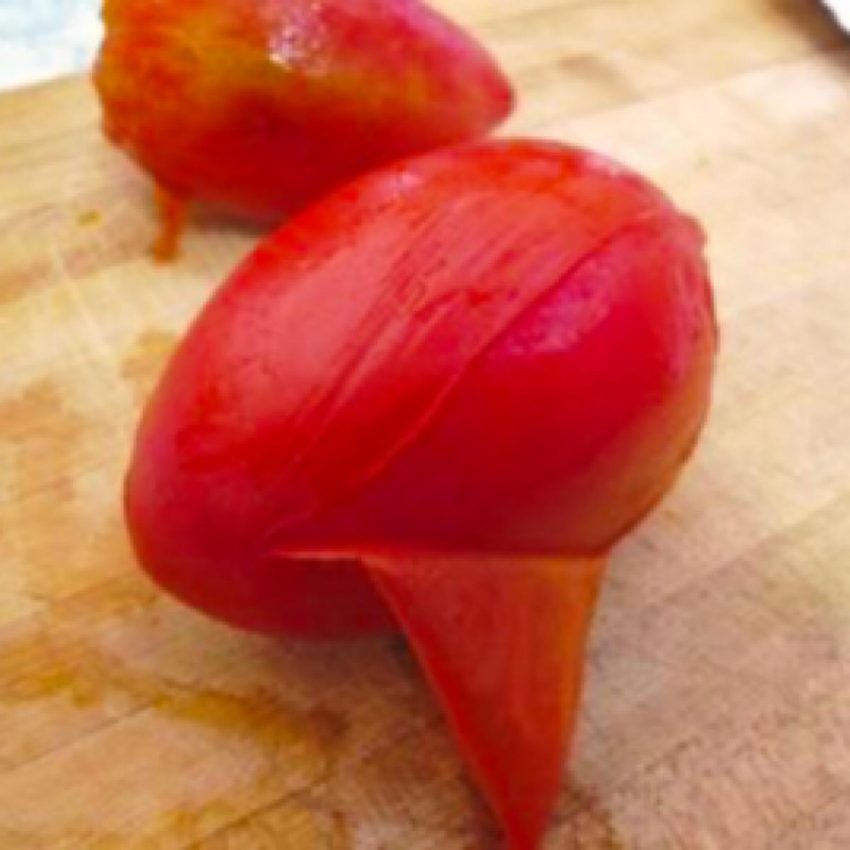
Although there are regions in Italy where tomatoes aren’t all that popular, many classic Italian and Italian-American dishes make them their superstar. Where would we be without pasta pomodoro, bruschetta, and caprese salad?
No surprise, then, that tomatoes are also the superstars in an Italian kitchen garden.
Interested in growing a complete Italian kitchen garden? Check out this detailed guide to designing and growing an Italian Kitchen Garden.
14 Favorite Italian Tomato Varieties for Your Kitchen Garden
Not all tomatoes are made equal, although they all started out as a pea-sized berry naturally found in Ecuador and Perú. When tomatoes first arrived in Italy, they were already domesticated, but the Italians really ran wild with them.
There are different Italian tomatoes for different cooking applications. Plum tomatoes, for example, are great for sauces and pastes because they have fewer seeds and a lower moisture content.
Here are a few examples of the different types of tomatoes loved by Italian cooks:
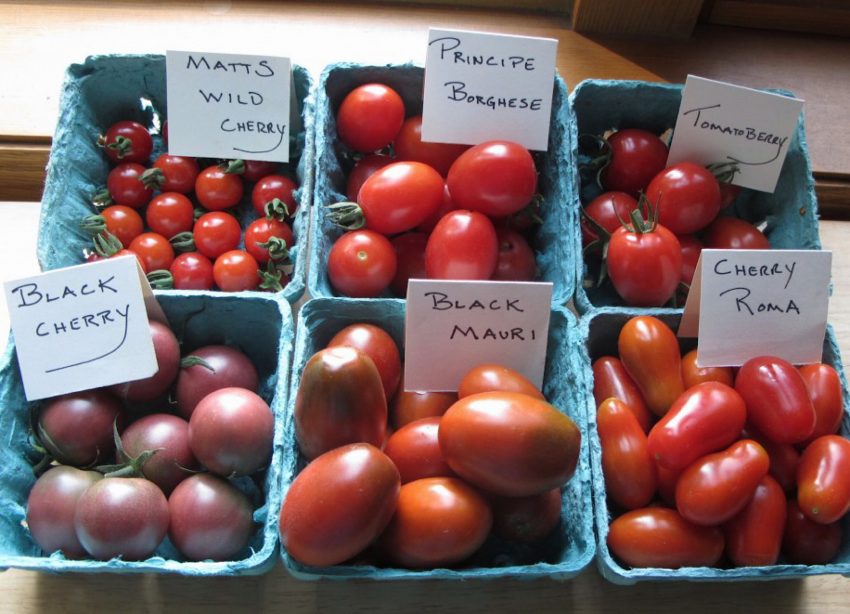
Beefsteak tomatoes are big and juicy (great for sandwiches):
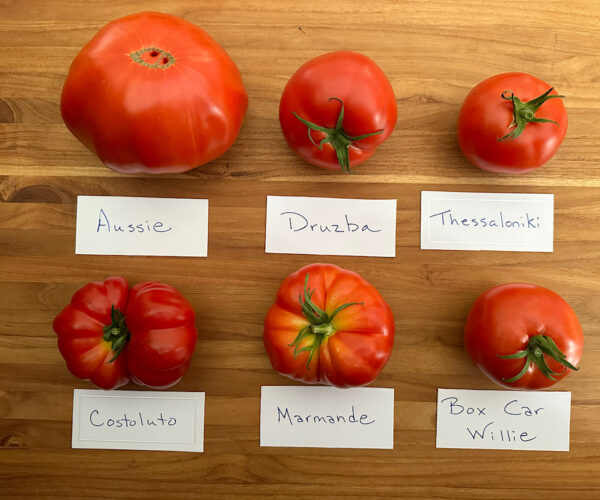
Cherry-type tomatoes are wonderful in salads:
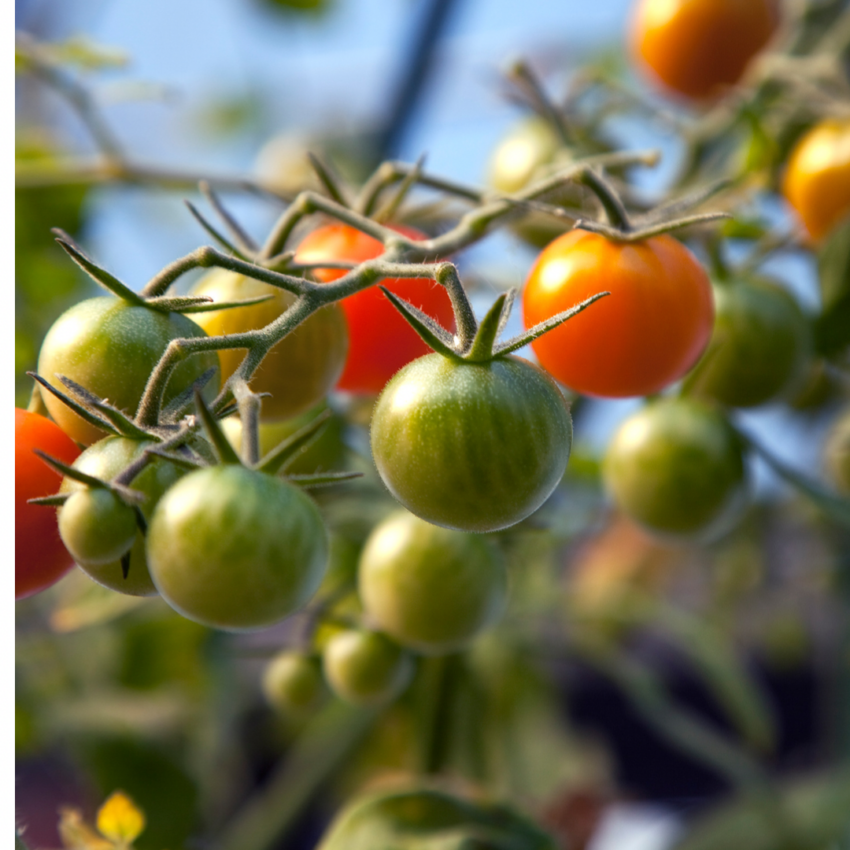
For your Italian kitchen garden, I recommend growing at least one type of paste tomato and one type of salad tomato. Between these two, you can prepare pretty much any Italian recipe!
Consider these popular Italian tomato varieties when planning your garden:
For sauces:
- San Marzano: the most famous Italian tomato
- Schiavone: heirloom brought to the USA from Sicily
- Re Umberto: has been around since 1878!
- Corbarino: traditionally for seafood dishes
- Pera d’Abruzzo: traditionally locally used for making passata
- Fiaschetto: was almost extinct, can still be difficult to find

For Sandwiches and Salads
- Cuore di Bue (Oxheart): known, indeed, for its heart shape
- Costoluto Genovese: big, ribbed beefsteak
- Rosa di Sorrento: pink beefsteak
- Camone: beautiful multicolored variety from Sardinia
- Datterino: “little date”, a wonderful little grape tomato
- Piccadilly: despite what its name suggests, it’s from Sicily!
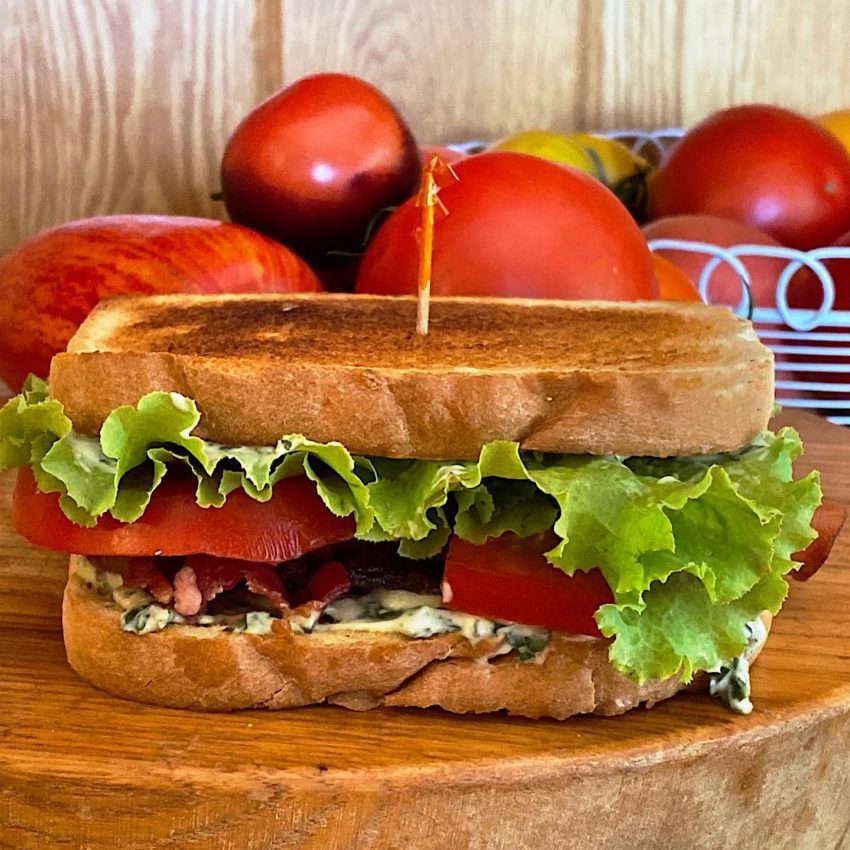
Other
- Principe Borghese: for drying
- Piennolo: cherry tomato, for traditional winter storage
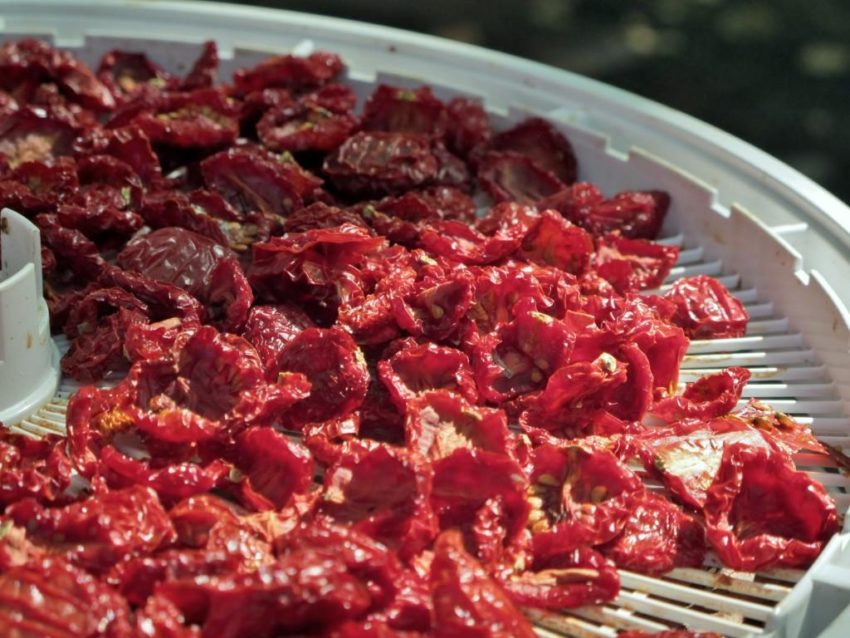
You can have a look at my post on the best seed catalogs for heirloom tomatoes for tips on how to find your favorite tomato varieties.
How To Grow Italian Tomatoes
Seed Starting
If you’d like to grow tomatoes in your Italian kitchen garden, keep in mind that they like warm weather. Most growers, especially in colder climates, prefer starting their tomato seeds indoors.
Once you find out your local last frost date, you can sow yours 6-8 weeks before the last expected frost.
Once the risk of frost has passed and the soil temperature is getting nice and toasty (60-70 °F), you can repot the tomato seedlings and start getting them used to outdoor weather before transplanting (referred to as hardening them off).

Container Growing
Yes, you can grow some Italian tomatoes in a container if you prefer! It’s a great option for those urban gardeners who are chronically short on space.
The trick for all but the largest containers is to pick a determinate tomato type (from our list above, that would be Fiaschetto or Principe Borghese).
Determinate tomatoes don’t grow in a vining manner and thus don’t need nearly as much space, nor do they usually require trellising. They produce their entire crop at once rather than throughout the season.
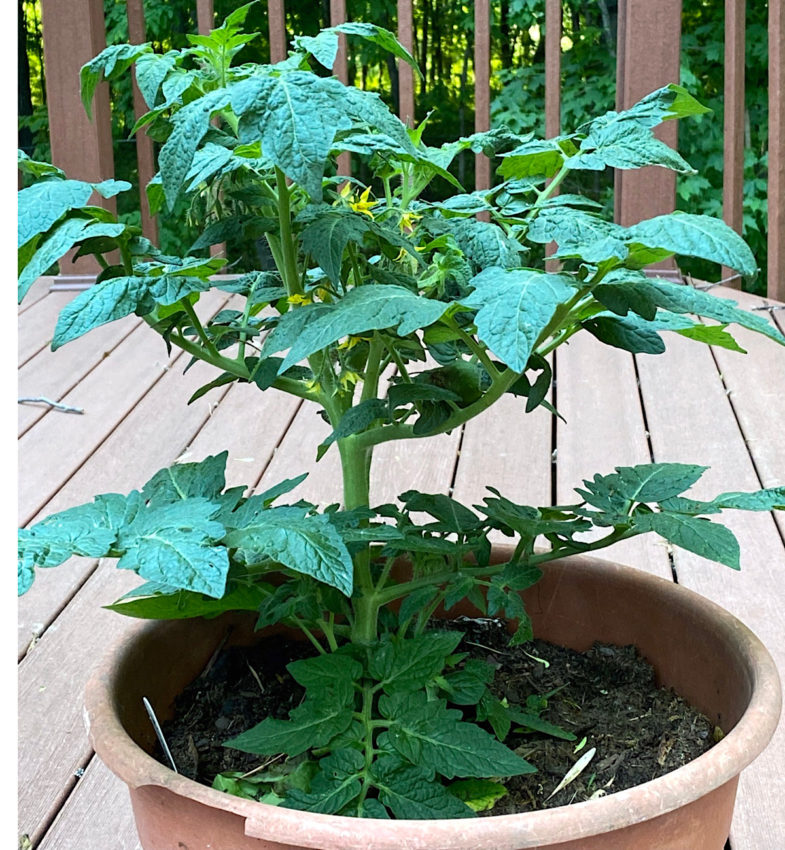
Learn more about container growing tomatoes if you are a balcony gardener:
Good Supports for Vining Tomatoes
If you’re going to be growing indeterminate (vining) tomatoes, which most tomatoes are, your plants will need some support.
You can learn more in the full guide post on trellising, staking, and fencing tomatoes.
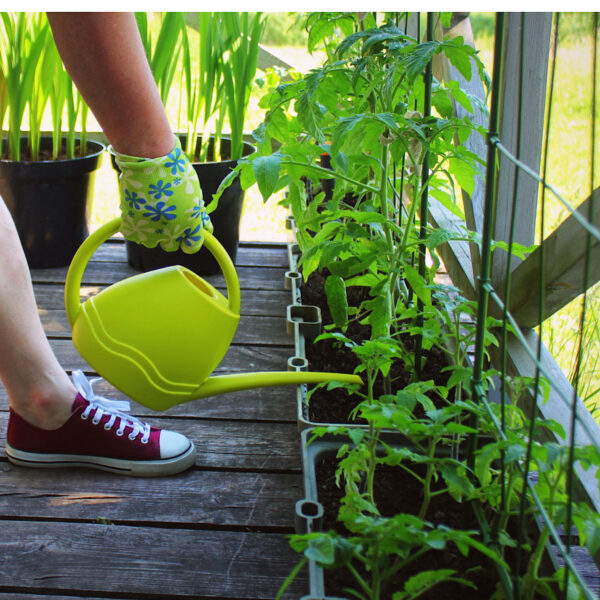
Harvest
As mentioned, determinate tomatoes will have a prolific yield in a short time, usually over a period of 6 weeks. This happens 60-100 days after germination depending on the variety. Be ready for a tomato tsunami! You might want to check the storage and freezing section below.
Indeterminate tomatoes start producing after the same amount of time, but once they start, they don’t stop until frost kills them off. You’ll get a constant trickle of tomatoes all summer long rather than a flush of tomatoes over a several week period.

Troubleshooting
Although growing your own tomatoes isn’t difficult and anyone can do it, it’s still possible to run into problems on the way, especially in the delicate seedling stage.
Luckily, you’ll be able to save your tomato plants in most cases. And if you don’t, then at least you learned something for next time!
Learn to troubleshoot tomato problems:
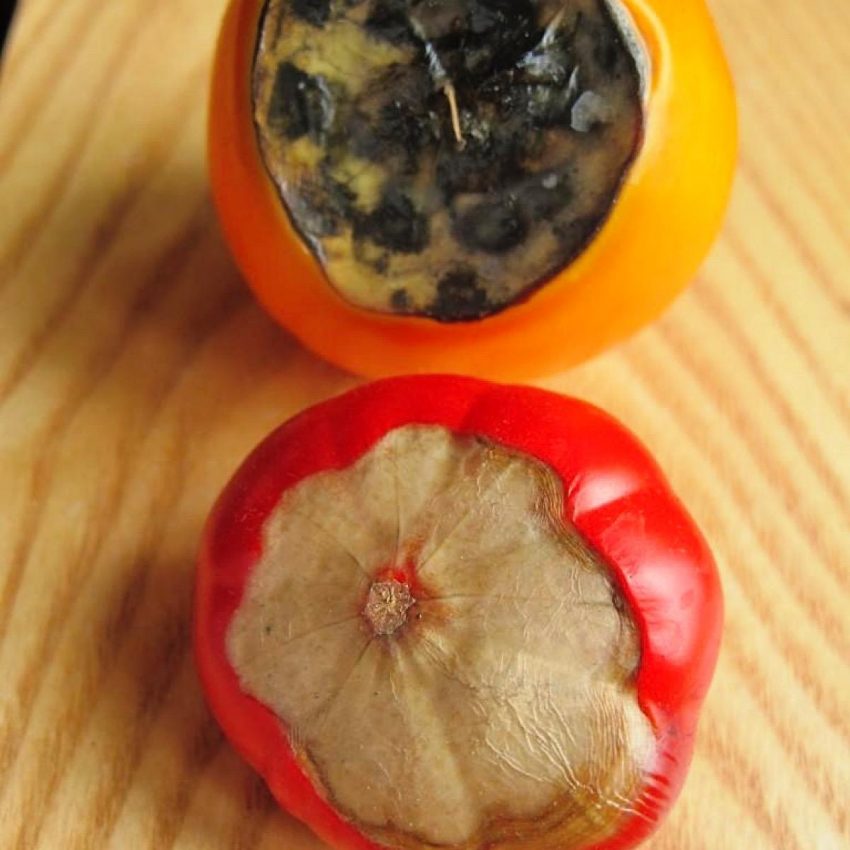
Cooking with Italian Tomatoes
Now here’s the good part! Once you’ve obtained your very own homegrown tomatoes, the world of Italian and Italian-inspired cooking is at your fingertips. The best part? All of these dishes will taste so much better than if you were to prepare them with watery, flavorless supermarket tomatoes.
A few of my favorite Italian recipes to get you started include:

Storing & Freezing Tomatoes
After harvesting your tomatoes they will last a few days on the counter (thinner-skinned heirloom varieties will deteriorate more quickly than hybrid varieties).
I don’t recommend refrigerating tomatoes, as this can seriously affect their texture, making them “mealy”. The green tomatoes you harvest at the end of season can be refrigerated however.
Because they don’t last very long when fresh, getting a tomato bumper harvest can be a bit intimidating. Fear not! There are endless ways to store tomatoes for future use in your (Italian) recipes.
Classic ways to preserve tomatoes include freezing and/or drying, but there are so many creative options for preserving the tomato harvest. Check out this category on preserving garden produce for a ton of ideas.
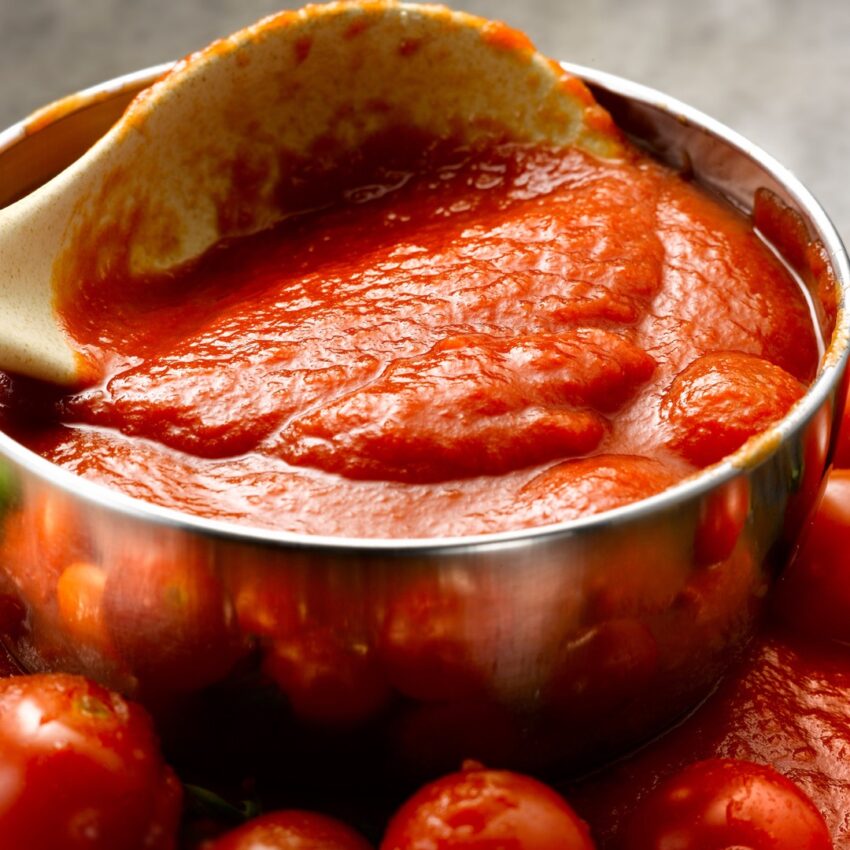
If you like my articles about cooking and gardening, subscribe to my weekly newsletter, where I share free recipes and gardening tutorials.


Leave a comment